Purgatory, one of the three parts of Dante’s Divine Comedy composed between the years c.1308 to 1320, tells about the climb of the poet on the seven levels of Mount of Purgatory.
The other two parts of the famous Divine Comedy are Inferno and Paradiso. The creation, Purgatory is the second part which comes after Inferno and before Paradiso.
Dante’s Purgatory begins with the climbing of Dante along with a Roman poet, Virgil up to the Mount of Purgatory.
The poem describes the nature of sin, moral issues, categories of love, and Church issues.
The whole poem is depicted as the mountain situated on the southern hemisphere which comprises the bottom, body, and the top section.
The bottom section is known as Ante-Purgatory, the top section as the Earthly paradise whereas the middle section is furthermore divided into seven levels or terraces.
The terraces or levels of Purgatory are systemic and focus on appropriate beatitude and prayers.
Furthermore, the seven levels are again divided into 3 parts: First three levels, fourth level, and the last three levels.
First three levels are related to sins caused by perverted love which is directed towards actual harms of others. Fourth is related to the souls of deficient love and the last three with the souls sinned by excessively loving good things.
See Also,
1. First Level: Pride
Content
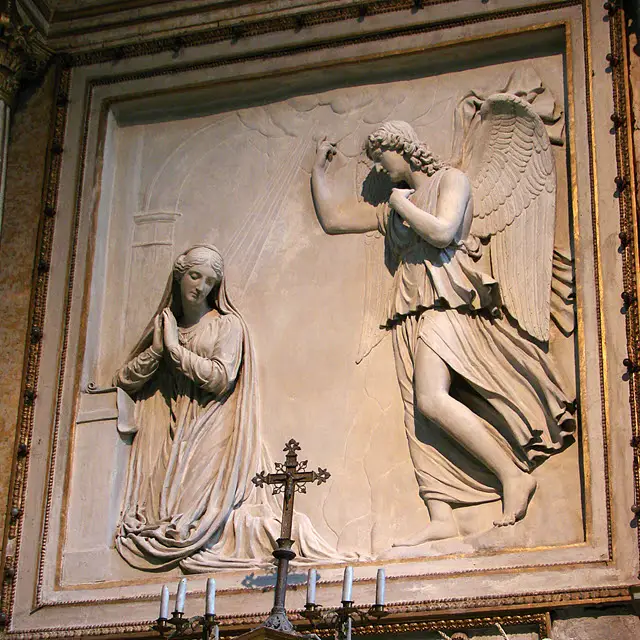
Source: Wikimedia Common
The process of climbing up the mountain or the Purgatory began from the first level known as the level of Pride.
When the two poets Dante and Virgil entered the first level they found the proud souls purging for their sins committed during their lives.
Besides the prideful souls, the duo also witnessed beautiful sculptures which expressed humility, the opposite of Pride. The humility was explained with the help of an example placed from the episode of the life of the Virgin Mary, titled Annunciation.
While moving forward, the duo came across the souls of the proud who were bent downwards due to the heavyweight placed on their backs. This was kind of a punishment for the prideful souls to make them unable to see the beautiful sculptures.
However, these souls including sons of some renowned person and being prideful for their family status were learning to be humble while climbing the level of Pride.
Finally, with the completion of the climb, an Angel comes to Dante and erases the letter P from his forehead. The removal of the first P from his forehead makes Dante feel lighter and easier to climb to the next level.
2. Second Level: Envy
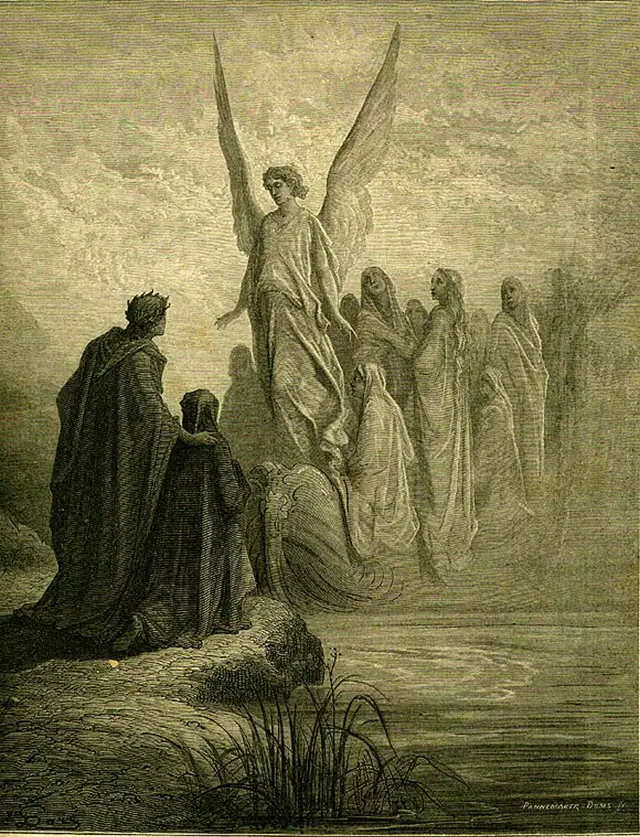
Source: Wikimedia Common
The duo, Dante and Virgil reached the second level known as the level of Envy. This level belonged to the souls of envious penitents who had committed sins of Envy during their earthly lives.
The sin included the grudging hatred upon another person’s good fortune, talent, or gifts and targeting to make the person deprived of that privilege.
When the duo entered the level they started hearing soft voices which were narrating stories of generosity, the opposite of Envy. The voices include some episodes on the examples of envy who were punished for being jealous or envious.
One of the examples was an episode of the life of the Virgin Mary which explained Virgin Mary being happy for getting married and also Christ performing his first miracle.
In addition to this, it also mentioned about the learning from Christ who asked everyone to love their enemies instead of being envious.
Like in the first level, here too souls were made to do some acts such as the souls were made to wear grey penitential cloaks while their eyes shut with iron wire.
It was done so to resemble the way a falconer shuts the eyes of a falcon to train him and leads to only focus on hearing the sound
During the end of the climb, an Angel removes the second P from Dante’s forehead and he is ready to climb to the other level.
3. Third Level: Wrath
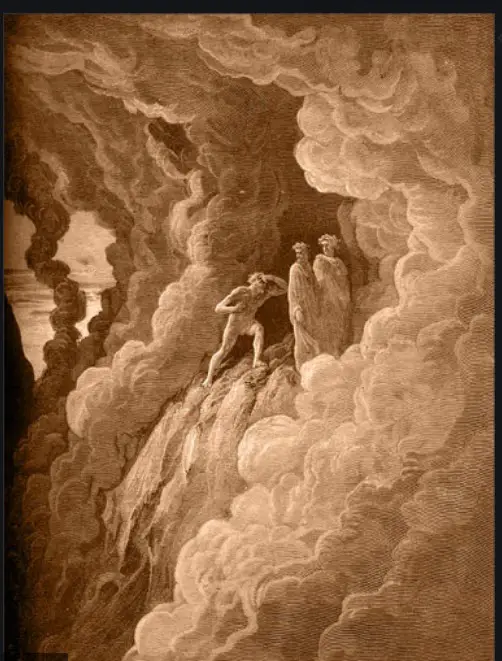
Source: Wikimedia Common
Dante and Virgil reached the third level which was known as the level of Wrath where they found that the level belonged to the souls of wrathful penitents.
As they entered the level, they saw the examples of meekness, the opposite of wrath and formed a vision in their minds.
Here too was the example of the episode from the Life of the Virgin Mary where the part of her finding in the temple is highlighted.
The scene is about Mary being loving and understanding when Christ had disappeared for three days. Whereas other parents would be angry and irritated given the same situation.
Likely, the souls in this level seemed angry and wanted to punish those who had made some mistakes, the punishment could range up to the killing.
Also, the example placed at this level explained that a woman wanted another man to be executed just for loving her daughter. This example showed the anger and wrathful behaviour.
The souls in this level too were made to act in a particular manner which included them walking around in blinding acrid smoke which resembled the blinding effect of anger.
Besides this, the prayers were used titled Agnus Dei, the whole prayer meant the lamb of God would take away the sins and show mercy on everyone.
By the end of the climb, the third P was erased from Dante’s forehead where he also heard the beatitude Beati pacifici meaning Blessed are the peacemakers.
4. Fourth Level: Sloth
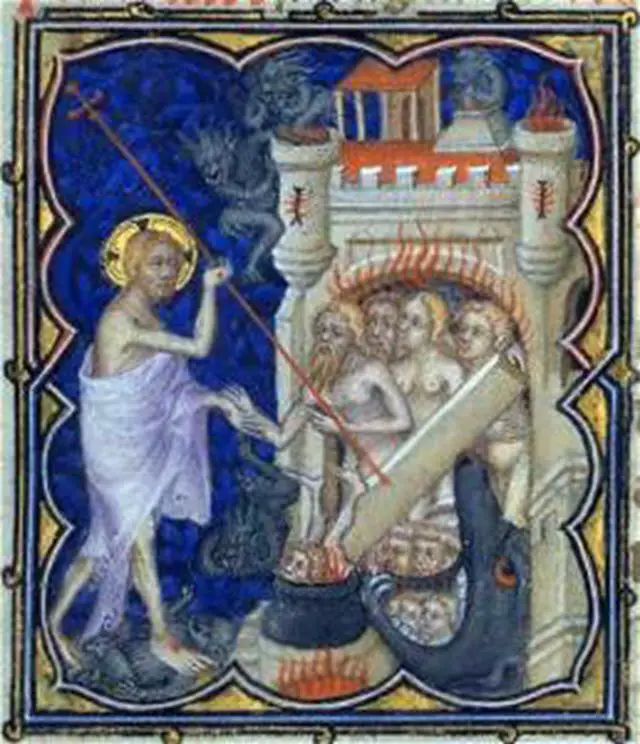
Source: Wikimedia Common
The duo entered the next level known as the level of Sloth where the souls who remained slothful during their earthly lives and those who committed sins of deficient love belonged.
These souls could also have been too reluctant to work or too lazy to care which led to sadness. Also, some were the ones who could not fulfil to act in pursuit of love during their lifetime.
The examples that were placed in this level were of the sloth and zeal. The main one consisted of the episode from the life of Virgin Mary where she was eager and in a hurry to visit her cousin Elizabeth and is named the visitation.
The example was put so to make the souls realize their sin and act supporting the zeal rather than the sloth behaviour.
Apart from the example, there was a beatitude for this level which was titled Beati qui lugent meaning blessed are those who mourn and get comforted.
By the end of this climb, Dante’s fourth P is removed from his forehead by the Angel of Zeal.
5. Fifth Level: Avarice
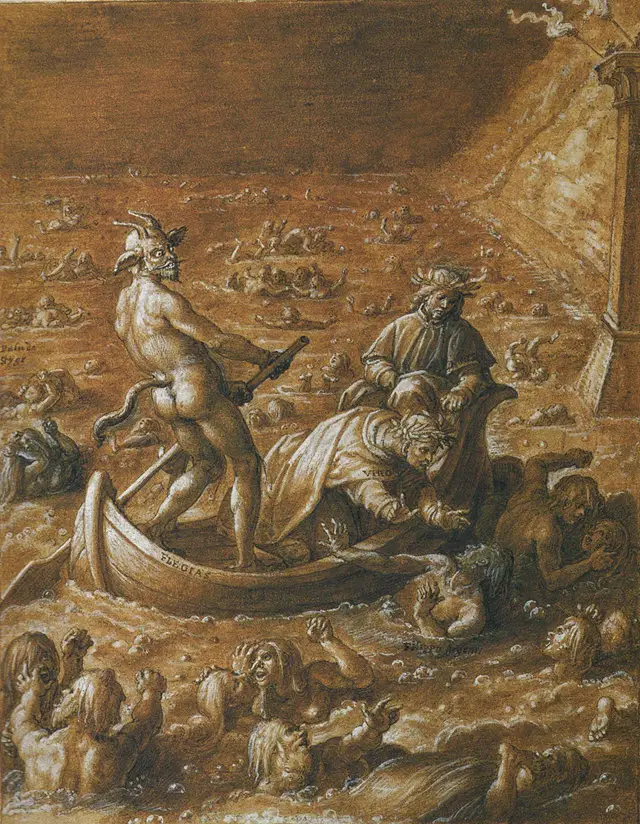
Source:Wikimedia Common
The fifth level entered by the poets, Dante and Virgil was known as the level of Avarice. Here, the souls of the excessive greed, ambition or extravagance during their earthly lives belonged.
Like in every other level, here too the souls of the sinful were treated, purified, or punished. The manner of punishment was the souls were made to lie facing downwards and were to recite some words.
These words were the psalm Adhaesit pavimento anima mea which were from the Psalm and they meant the expression of a desire to follow the law of God.
This level also contained the episode from the life of Virgin Mary which was shown as an example with the scene of the birth of Christ.
Apart from the examples and punishments, the duo felt certain movements which could be made from a tremor. These tremors were caused when a soul was being ready to move on from Purgatory.
Here the duo met with a Roman poet Statius and found that the tremor was caused while he was trying to move to another level of the Purgatory.
By the end of this level, Dante is directed by the angle of Moderation after brushing off the fifth P from his forehead.
6. Sixth Level: Gluttony

Source: Wikimedia Common
The sixth level climbed by the poets was the level of Gluttony. This level contained the gluttonous souls who gave over-emphasis on food, bodily comfort, and beverages.
As they entered the level, they heard some voices coming from the trees which gave examples of temperance, the opposite of gluttony.
And here too the episode of the life of Virgin Mary was mentioned where she shared her Son’s gifts with others during the event of the Wedding at Cana.
Like other levels, this too had a prayer which went by Labia mea Bomine meaning lord open my mouth and lips and I will declare your praise.
Apart from the examples and prayers, the souls of this level were punished in a particular manner. They were made deprived of the food and also the fruits were on the trees which were forever out of reach.
In addition to these findings, the poet also encountered with his friend Forese Donati and Bonagiunta Orbicciani. He was praised by Bonagiunta for his sweet new style.
By the end of the climb, Dante got his sixth P erased from his forehead by the Angel of Temperance.
7. Seventh Level: Lust
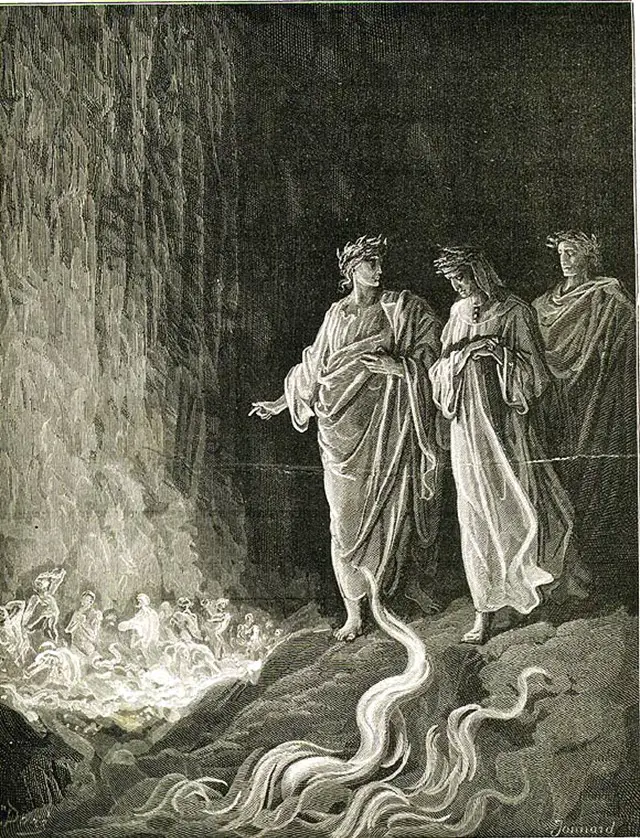
Source: Wikimedia Common
The final or the seventh level climbed by the poets was known as the level of Lust. The level belonged to the souls who had committed sins of lust during their earthly lives.
In this level, the two types of souls passed through with the examples of lust which include Pasiphae by the heterosexual and Sodom & Gomorrah by the homosexual.
All the souls belonging to both the groups formed a circle and greeted each other. And, mostly the souls who were repenting the sexual desires which are misdirected called forth in praises and marital fidelity.
The example of chastity the opposite of lust is shown by the run-through of the souls in the flames.
This level consists of a massive wall of flame which had to be crossed in order to pass it. Also, the souls had to sing a particular hymn known as Summae Deu Clementine meaning God of Supreme Clemency.
However, at first Dante hesitated to run through the flames but with Virgil encouraging him to do so to return to his beloved wife Dante ran through it.
Finally, all three poets fall asleep after jumping from the flames. And, by the end of the climb, the last or the seventh P was also erased from Dante’s forehead.
Conclusion:
The Dante’s Purgatory remains one of the most impactful poems written in history. It takes the reader through all the levels or passages of the Purgatory.
While going through the poem, every reader experiences the reality of committing sin during the earthly lives and the punishment to be faced afterlife.
This plays a significant role in everybody’s life by teaching how to live and behave in a positive manner to avoid the punishment that could be faced afterlife.

I should read Dantes “Heaven & Hell”. I would like to receive emails from People who wish to study some more about Heaven & Hell.